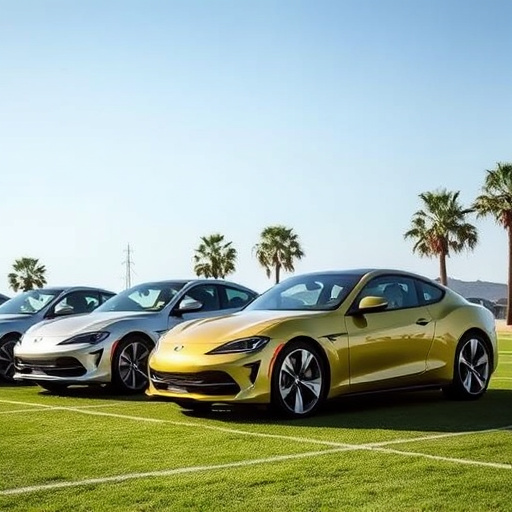Golf cars, particularly their electric models, offer a substantial environmental advantage due to their reduced carbon footprint. Electric golf cars produce zero tailpipe emissions, contributing less to air pollution in areas like gated communities and retirement homes. Throughout their lifecycle, they have a lower impact due to sustainable materials and energy efficiency. In contrast, traditional gas-powered vehicles emit harmful pollutants and contribute to climate change. Electric golf cars play a crucial role in combating global warming by utilizing renewable energy sources, with advancements in battery technology and recycling programs further minimizing their ecological footprint.
Golf cars, particularly their electric variants, offer a surprisingly green journey. These compact vehicles are transforming the way we think about transportation on courses and beyond, presenting an eco-friendly alternative to traditional gas-powered cars. With lower emissions and energy efficiency at the forefront, electric golf carts are not just a game-changer on the fairway; they contribute to improved air quality and play a significant role in mitigating climate change. This article explores the environmental benefits of golf cars, focusing on their reduced carbon footprint, the rise of electric models, and the potential for sustainable parts.
- Reduced Carbon Footprint: The Eco-Friendly Advantage of Golf Cars
- – Discussion on the lower emissions compared to traditional gas-powered vehicles
- – Benefits for the environment in terms of air quality and climate change
Reduced Carbon Footprint: The Eco-Friendly Advantage of Golf Cars

Golf cars, and particularly their electric variants, offer a significant eco-friendly advantage with their reduced carbon footprint. Unlike traditional gasoline-powered vehicles, golf carts do not emit harmful tailpipe emissions, contributing less to air pollution. This is especially relevant in areas where golf carts are primarily used for short-distance travel, such as within gated communities, retirement homes, and country clubs.
The environmental benefits extend beyond the absence of tailpipe emissions. Electric golf cars also have a lower overall environmental impact throughout their lifecycle, from manufacturing to disposal. The use of sustainable materials in construction and the potential for recycling specific Golf Cars parts contribute to a greener production process. Moreover, electric motors are more energy-efficient than internal combustion engines, further reducing the carbon footprint associated with ownership and operation.
– Discussion on the lower emissions compared to traditional gas-powered vehicles

Golf cars, and particularly their electric variants, stand out as environmentally friendly transportation options compared to traditional gas-powered vehicles. One of the key advantages lies in their significantly lower emissions. Electric golf cars produce zero tailpipe exhaust, eliminating harmful pollutants like carbon monoxide, nitrogen oxides, and particulate matter that contribute to air pollution and climate change. In contrast, gas-powered vehicles emit a range of greenhouse gases and toxic compounds, exacerbating environmental issues, especially in densely populated areas.
The use of electric golf cars also contributes to a reduction in the overall carbon footprint associated with Golf Cars Parts. While the initial manufacturing processes for electric components may have environmental implications, the long-term benefits far outweigh these costs. As electric vehicles become more prevalent, advancements in battery technology and recycling programs further minimize their ecological impact, making them a sustainable choice not just for golf courses but for various other settings where clean and efficient transportation is sought.
– Benefits for the environment in terms of air quality and climate change

Golf cars, particularly their electric variants, offer significant environmental benefits. One of the most notable advantages is the improvement in air quality. Unlike traditional gasoline-powered vehicles, electric golf cars produce zero tailpipe emissions, reducing pollutants like nitrogen oxides and particulate matter that contribute to smog and respiratory issues. This is especially beneficial in urban areas where golf cars are often used for transportation within close proximity to residents.
Moreover, the shift towards electric golf cars plays a crucial role in combating climate change. By drawing power from renewable sources like solar or wind energy, these vehicles significantly lower carbon emissions. The reduction in greenhouse gases helps mitigate global warming and contributes to a more sustainable future. In fact, the use of electric golf car parts can lead to a 50% or more decrease in overall vehicle emissions compared to conventional cars, making them an eco-friendly choice for both personal and commercial use.
Golf cars, particularly their electric variants, offer a compelling solution for reducing our environmental impact. By embracing these eco-friendly vehicles, we can enjoy cleaner air, improved climate conditions, and a lower carbon footprint—all while navigating the golf course or even urban areas. The future of sustainable transportation looks bright, with golf car parts and technology continuing to innovate and contribute to a greener world.














